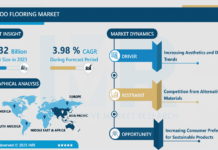Digital disruption is increasing rapidly in most industries. Companies like Uber, Door Dash, and Yelp have arisen not just because their industries were ripe for change, but because the major incumbents in those industries—taxi companies, for example—were too slow to embrace it.
The construction sector on the other hand — despite being the quickest-growing industry worldwide — is the last one to bestow with its benefits. If anything, construction is very much a tech-averse industry.
Especially this year, due to the pandemic, construction sites across the world emptied and were among the sector that stalled entirely for a good few months due to the lockdown. But it has also been a year of looking into construction technology — an oft-neglected segment — as the Covid-19 pandemic forces the age-old industry to digitalize.
A McKinsey report last month predicted a big shakeout across the construction industry over the next decade, with companies adopting technologies and methodologies from the manufacturing world. Indeed, the bulk of short- and long-term pandemic-driven construction industry issues will be solved with technology.
Construction is the biggest industry in the world, and yet, even outside of crises, it is not performing well. The ecosystem represents 13% of global GDP, but construction has seen a meager productivity growth of 1% annually for the past two decades, according to McKinsey.
Taking the good with the bad, it is expected that the continuing Covid-19 pandemic will drive a net acceleration in the use of technology, and the construction industry will continue its transformation from a highly complex, fragmented, and project-based industry to a more standardized, consolidated, and integrated one.
To recall, An IDC report published in January 2020 forecasts that demand for construction robots will grow about 25% annually through 2023. As for the global construction market size, it is expected to decline from US$11.2 billion in 2019 to US$10.56 billion in 2020. However, the industry will show signs of recovery in 2021 and reach a market size of USD 11,496.7 billion, projecting a CAGR of 1.2% between 2019 and 2021.
Asia Pacific is projected to register the highest CAGR in terms of value in the global construction industry during the forecast period as the region dominated the construction industry in 2019. The construction companies have ample opportunities in the APAC market in comparison to the European and North American counterparts owing to low-cost labor and raw materials.
Despite the construction industry’s traditional resistance to new technologies, some are making significant strides in rounds. Notable examples include mobile technology, drones, building information monitoring (BIM), virtual reality and wearables, 3D printing, and artificial intelligence.
The beginning of a renaissance in the adoption of new technologies in communication, material production, supply chain management, and industry coordination, is definitely on its way. Incumbents now face a choice—lead the change or watch someone else do it.




























